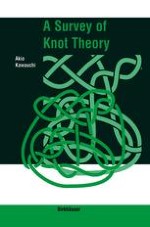1996 | Buch
Über dieses Buch
Knot theory is a rapidly developing field of research with many applications not only for mathematics. The present volume, written by a well-known specialist, gives a complete survey of knot theory from its very beginnings to today's most recent research results. The topics include Alexander polynomials, Jones type polynomials, and Vassiliev invariants. With its appendix containing many useful tables and an extended list of references with over 3,500 entries it is an indispensable book for everyone concerned with knot theory. The book can serve as an introduction to the field for advanced undergraduate and graduate students. Also researchers working in outside areas such as theoretical physics or molecular biology will benefit from this thorough study which is complemented by many exercises and examples.
Anzeige
